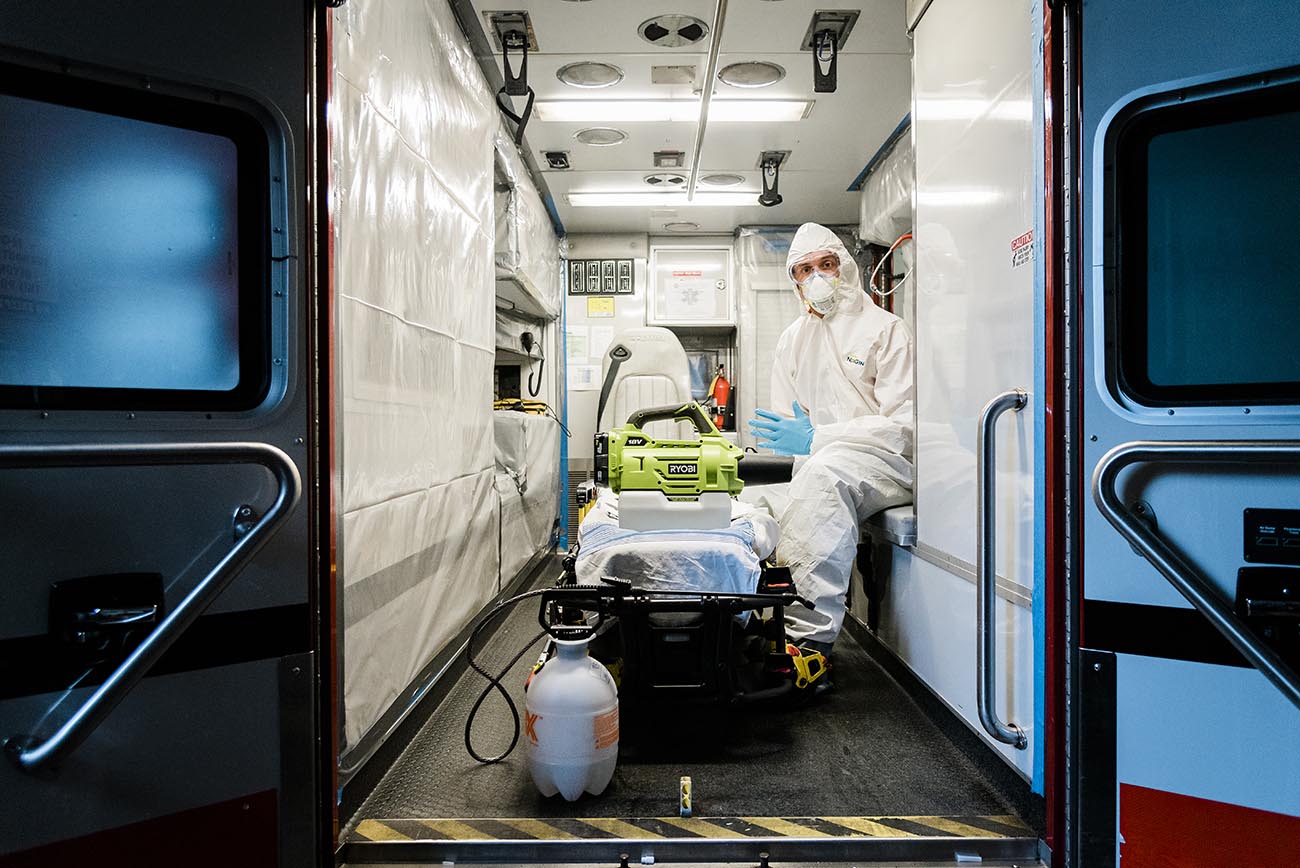LYNN — Todd Simoes has been an EMT for more than 20 years, but he’s shocked by what he’s been encountering during the coronavirus pandemic.
“We’re seeing a lot of sick, sick people,” said Simoes, an EMT with the Cataldo Atlantic Ambulance unit assigned to Lynn. “In the last week or two, there’s been a spike in coronavirus patients on calls. It’s been consistent. It doesn’t let up.”
There’s been a dramatic shift in the type of calls Simoes has been getting over the past month. Three to four weeks ago, before there was a positive case in the city, the virus-related calls were from people who were anxious about having a cough or ache.
Although they were asymptomatic, those people wanted to be taken to a hospital, which was dangerous because there would be COVID-19 positive patients there.
Now, though, he’s going on calls for a lot of seriously ill people. Making matters worse is how quickly immuno-compromised people, such as those with asthma and bronchitis, are declining.
For instance, Simoes said paramedics may respond to a call for someone who isn’t feeling well and has some shortness of breath, but by the time the patient gets to the hospital, there could be a need for supraglottic airways for breathing assistance or even intubation.
“This is crazy out here,” said Simoes. “I’ve been in EMS (emergency medical services) for 22 years and as a paramedic, I’m just dumbfounded this is happening.”
As a worldwide mass casualty incident, the pandemic is taxing every community, hospital, and department, including police and fire, Simoes said, which is scary because resources have to be used appropriately.
“I have seen firsthand that the hospitals that I have been transporting to are making due with what they have and I do feel they are under-equipped, especially with the N95 (masks), said Simoes.
“They have respirators for breathing mechanisms for the patients but they only have so many rooms. They only have so much staff and the influx of people are quickly outweighing what they have for capacity.”
All healthcare professionals are working hard, but Simoes said EMS workers, such as EMTs and paramedics have been kind of forgotten among the doctors, nurses and respiratory therapists, even though they typically have the first contact with patients.
Often, paramedics are in an enclosed ambulance with patients, and although they’re wearing Personal Protective Equipment (PPE), it isn’t entirely encapsulating their bodies, which is exacerbated by the multiple contacts they’re having with infected people throughout their shifts, Simoes said.
He’s not alone.
The Massachusetts Ambulance Association, which advocates for private ambulance services in the state, has joined the #DontForgetEMS campaign. Spearheaded by the American Ambulance Association, the effort is aimed at gaining access to PPE set aside by Amazon for healthcare providers during the COVID-19 outbreak.
Ryan Goodwin, a Lynn firefighter and paramedic, said he wears PPE on every call now, which includes an N95 mask, gloves, goggles and a Tyvek suit.
“I guess our guard is a little higher,” said Goodwin. “We wear our PPE for everything now. We’re just worried about protecting ourselves and the citizens.”

Goodwin stressed that the fire department is still responding to calls as they normally would. However, he said people need to tell paramedics and firefighters whether there are any symptoms in the building beforehand so they can take the proper precautions.
“We’re still going out and are proud to serve the citizens and we’ll be here if they need us,” said Goodwin. “We’re doing the best we can with what we’ve got and we’re making the best of the situation we’re in.”
Lynn Fire Capt. Joseph Zukas, the city’s EMS director, said people should not feel the need to lie about their possible COVID-19 symptoms on 911 calls because it won’t affect the fire department’s response. The patient will still be treated and transported to the hospital, he said.
Zukas said there have been a couple of scares, which speaks to the importance of full disclosure. Two firefighters had to self-quarantine for two weeks as a precaution after being exposed to a potential coronavirus patient on a past call. The test for that particular patient, who had exhibited flu-like symptoms, ultimately did not come back positive, he said.
In most instances, Zukas said paramedics and firefighters feel safe while wearing PPE. The department currently has enough gear, but if calls continue to increase, that could put a strain on their equipment needs.
“None of us have ever lived through a pandemic of this nature before,” said Zukas, but he noted that firefighters are used to dangerous situations.
“The nature of our job is we run into burning buildings which there’s a degree of danger in that,” said Zukas. “We do it as safely as (we can). We’re out there to help and if they can help us, hopefully we can get through this as a community and we’ll be stronger, and God forbid if this ever happens again, we’ll be so much better (prepared) next time.”
Goodwin said he treats every day at work as he normally would. Despite the increase in coronavirus-related calls in the past two weeks, it’s business as usual at the department, he said.
“Nobody plans for these things but when they happen, you get as prepared as you can and you treat the citizens as you normally can,” said Goodwin. “That’s why we became paramedics: because we like to help out in any situation, and this is the situation we’re in. We’re always there to help.”

